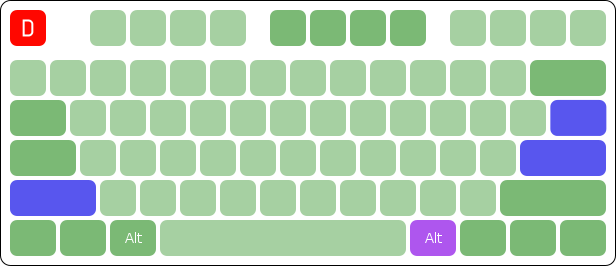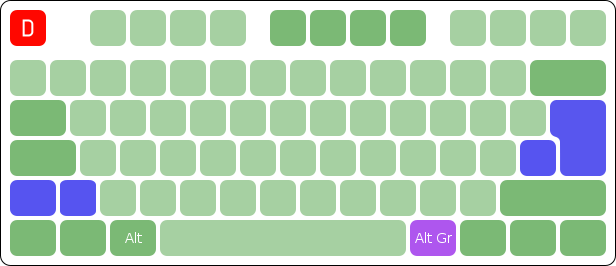ANSI vs ISO
When talking about physical keyboard layouts, the terms ANSI and ISO refer to the two main classes of Western keyboard layouts. The terms ANSI and ISO literally refer to the American National Standards Institute and International Organization for Standardization respectively. ANSI and ISO are physical layouts, i.e. they describe the size and position of the keys regardless of the logical layout (US QWERTY, UK QWERTY, German QWERTZ, Colemak, Windows vs Macintosh etc). Japan has its own keyboard layout, JIS, similar to ISO, but with three additional keys. The terms "ANSI" and "ISO" are also used, perhaps erroneously, to describe keyboards with a "big-ass" enter key, i.e. an enter key that consumes the union of the space occupied by both the ISO and ANSI return keys.
Contents
Layouts
ANSI
ANSI layout keyboards are used in the United States and the Netherlands amongst other countries. PC keyboards using the ANSI layout as used by the IBM Model M are typically referred to as 101-key (pre-1995), 104-key (with the Windows and context menu keys added), and 87-key (standard tenkeyless layout). The main cluster of keys is laid out thus:
The blue and purple keys illustrate the keys that differ from ISO.
ISO
ISO keyboards are used by many European countries, and with one extra key compared to ANSI keyboards, are correspondingly referred to as 102-key, 105-key and 88-key for PCs.
The pink and purple keys illustrate the keys that differ from ANSI. In addition to having one extra key, the ISO layout has another fundamental property: the right Alt key is replaced with the Alt Gr key, which is a typographic meta key that accesses the third symbol on a keyboard. The use of accents in European languages leads to the need to enter many more symbols than in the US, with keys having increased symbol overloading. For example, in the UK, the "4" key will produce "$" with the Shift key held, and "€" with the Alt Gr key held.
Implications


